Dear Readers: I welcome today Ron Dunning, who wrote here last year about his “Akin to Jane” website – today he shares with us an article he wrote for the Huguenots of Spitalfields newsletter “Strangers” – here expanded somewhat and with pictures – and see how Jane Austen connects to various families and traditions of Spitalfields life in London.
*******************
[View looking down Brushfield Street toward Christ Church, Spitalfields – image from HofS facebook page, from Bishopsgate Institute]
Jane Austen’s Family and the Huguenots
To have lived in London for the past 40 years has been an immense pleasure. Now I’ve discovered a new one, and that is to be retired in London. I’ve always loved to explore, but was only able to appreciate the various parts of town for their ambience. Now there’s time to appreciate them more deeply, to learn about their associations with history, about interesting residents. Many have passed out of fashion and been built over – in which case there’s only the odd surviving building to stimulate the imagination – but in other areas, where the faded charm is obvious and where their economic value has not been great enough to attract the redevelopers, new residents have moved in to restore houses and revive the life of the community.
[Rooftops of Spitalfields, formerly the workrooms of the silk weavers and now gentrified – c Jeremy Freedman]
One such area that I’ve come to know much better is Spitalfields, just to the east of London’s old city walls. Its development by speculative builders was begun in the early 1700s, as a new suburb. Huguenot refugees from France and the Low Countries soon settled there, particularly those involved in the silk fabric trade. They brought their skills and their contacts from the continent and quickly restored their prosperity. Some 150 years later the mechanising of weaving, relaxation of tariffs on imports from France, and robust trade with China destroyed the Spitalfields silk trade.
[Image from the Huguenots of Spitalfields Facebook page]
The houses had aged by the mid-19th century too, and to some extent Spitalfields became a slum, housing successive waves of immigrants – who each moved on once they became prosperous. By the 1970s, when the latest wave of new arrivals to the poorer streets was Bengali, city redevelopment was threatening to overtake it. Just in the nick of time young artists discovered the antique charm of the weavers’ houses, which could be bought for a pittance. They are now worth over £1,000,000.
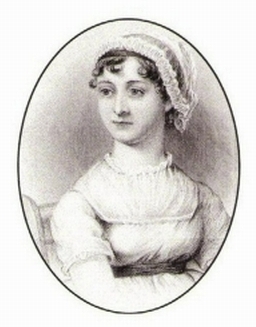 I’ve been researching the Austen pedigree for long enough that it’s possible to link her family with almost anyone. Though the worlds of the Huguenots and of Jane Austen would seem almost to inhabit separate universes, a surprising number of Huguenot families had close connections with hers. I’ve made a list of the most notable.
I’ve been researching the Austen pedigree for long enough that it’s possible to link her family with almost anyone. Though the worlds of the Huguenots and of Jane Austen would seem almost to inhabit separate universes, a surprising number of Huguenot families had close connections with hers. I’ve made a list of the most notable.
Anyone who has read Jon Spence’s book, Becoming Jane Austen (or seen the film Becoming Jane), will recognise the name of Lefroy. Antoine Loffroy, a native of Cambray, took refuge in England from religious persecution in the Low Countries in about 1587, and settled at Canterbury, where he and his family engaged in the business of silk dyeing. His descendant Tom Lefroy was the one young man with whom Jane was said to be truly in love. Tom at that point didn’t have an income with which to support a wife, and was quickly bundled off by his elders and betters. He rose eventually to become the Chief Justice of the Court of Queen’s Bench in Ireland and, at the end of his life, remembered Jane with great affection. Ben Lefroy, from a later generation, did marry an Austen – one of Jane’s favourite nieces, Jane Anna Elizabeth.
The Portals were an ancient and noble Protestant family of Toulouse who stood firmly by the faith of their fathers, and several of them suffered death rather than recant it. They were among the Huguenots who introduced the art of fine paper making to England – Henry Portal established a mill at Laverstoke, on the River Itchen in Hampshire. He achieved such a reputation that the Bank of England awarded him the contract to produce bank notes. Living in Hampshire, the Portals had extensive social contacts with the Austens. Adela Portal married Jane’s nephew Edward Knight, while her sister Caroline married Edward’s brother William.
The Chenevixes were another distinguished family of Protestants, this time from Lorraine, who fled after the 1685 Revocation of the Edict of Nantes. One branch settled in Ireland, and were much attracted to the military and clerical professions. Melesina Chenevix, the poet and diarist, and granddaughter of Richard Chenevix, the Anglican Bishop of Waterford and of Lismore, was the ancestor of a number of people linked to the Austen pedigree. Melesina had married Richard Trench – the de la Tranches were yet another family who had taken refuge in England shortly after the massacre of St. Bartholomew – and their descendants assumed the double-barrelled surname of Chenevix-Trench. Their granddaughter Melesina Mary Chenevix-Trench married Chomley Austen-Leigh, Jane’s great nephew. Melesina Mary’s sister Helen Emily married Arthur Blundell George Sandys Hill, another great nephew. Their brother Charles married Emily Mary Lefroy, a cousin of Tom Lefroy. Their cousin Melesina Gladys, as well as being the mother of the famous editor of the Daily Telegraph, Bill Deedes, was the grandmother of FitzWalter Plumptre, the Baron FitzWalter – who can also trace his pedigree to the family of Eleanor Bridges, the wife of Jane’s brother Edward. Lord FitzWalter still lives at Goodnestone, the seat of the Bridges family, where Edward and Eleanor lived before they could move into Godmersham.
David Papillon, the first of his family to settle in England, had been sent with his mother and siblings by his father, to escape persecution. They were shipwrecked while crossing the English Channel, and his mother drowned. The story of the mingling of genes between David’s descendants and the Austens, through the Brodnaxes, is a bit too obscure to tell here, but one of them featured in Jane’s life – the Rev John Rawstorne Papillon. The living of Chawton parish was offered to him; should he decline, it was then to pass to Jane’s brother Henry. John did take it and became the rector of the village in which Jane lived during her final years. There is a neat bracketing of Huguenot suitors for her hand, from the beginning and the end of her adult life – Mrs Knight, the widow of Thomas Brodnax and elderly benefactor of both the Austens and the Papillons, suggested that the Rev John, a life-long bachelor, would make a suitable husband. With characteristic irony Jane remarked in a note to her sister: ‘I am very much obliged to Mrs Knight for such a proof of the interest she takes in me – & she may depend upon it, that I will marry Mr Papillon, whatever may be his reluctance or my own – I owe her much more than such a trifling sacrifice.’
I could end this essay here, but want to mention another resonance between the Huguenots and the Austens, and to return Spitalfields to the fore. Jane’s paternal ancestors, going back three generations and further, were clothiers of Kent – staunchly Protestant, fiercely independent, wool and woollen fabric merchants. The organisation of their business was very similar to that of the silk merchants in London. I was struck, while gazing up to the roofs of Spitalfields, by a parallel. In both industries labour was organised by narrowly demarcated skills, and in both the weavers’ workplace was accommodated on the top floor of merchant’s houses. I was seized by a vivid impression of crabbed men and no doubt women, in both London and Kent, toiling for 14 hours a day in those garrets for a pittance!
[Grovehurst House: one of the Austen houses at Horsmonden in Kent, which dates in parts from the 14th century – I was struck by the resonance between Spitalfields and the Kentish Austens – they were clothiers, and their industry in wool was structured much like silk weaving in London. My understanding is that the weavers worked in the loft of this house.]
[Initials of John (Iohannes, presumably) Austen, over the middle window upstairs, cRon Dunning]
[Another Austen house (Broadford) at Horsmonden, Kent where the weavers laboured on the top floor]
*******************
A brief history of the Huguenots
The St. Bartholomew’s Day Massacre in 1572 was a targeted group of assassinations, followed by a wave of Roman Catholic mob violence, directed against the French Calvinist Protestants (known as Huguenots) during France’s Wars of Religion. The Edict of Nantes, issued on 13 April 1598 by King Henry IV of France, granted them substantial rights in the interest of civil unity. In October 1685 Louis XIV, Henry IV’s grandson, revoked the Edict of Nantes with the Edict of Fontainebleau, and declared Protestantism illegal. As many as 400,000 Protestants chose to leave France, moving to Great Britain, Prussia, the Dutch Republic, Switzerland, South Africa, and the new French colonies in North America. This exodus deprived France of many of its most skilled and industrious individuals.
*********************
Links and attributions, with thanks to all!
- Photographs of Spitalfields as noted are the work of Jeremy Freedman: www.jeremyfreedman.com
- The Huguenots of Spitalfields website: http://www.huguenotsofspitalfields.org/
- the amazing Spitalfields Life blog: http://spitalfieldslife.com/
- Photos at the Facebook page of the Huguenots of Spitalfields [by Jeremy Freedman]: https://www.facebook.com/HuguenotsofSpitalfields/photos_stream
- Ron’s pedigree of the Austens and associated families can be found at: http://wc.rootsweb.com/~janeausten
- Interview with Ron Dunning at JAIV

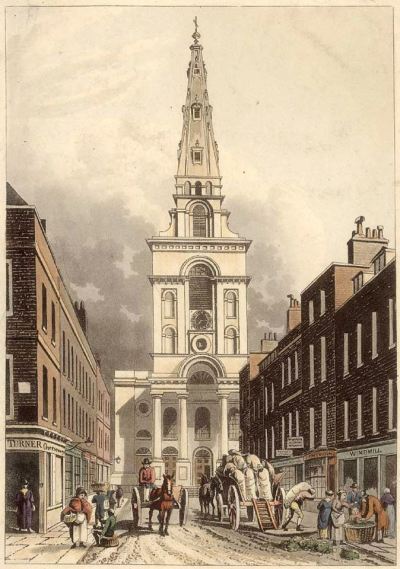
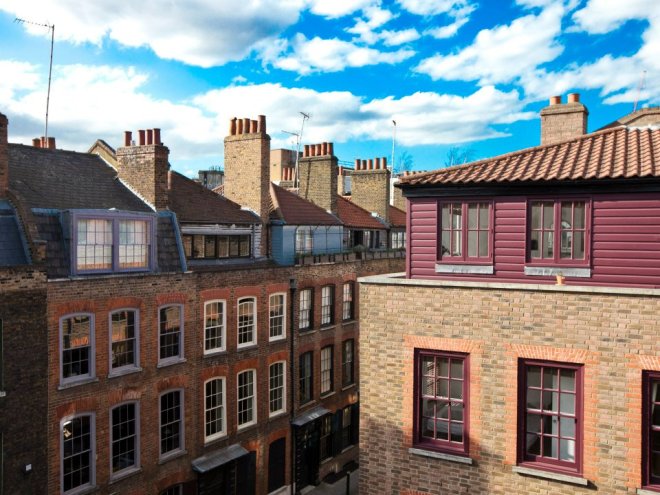

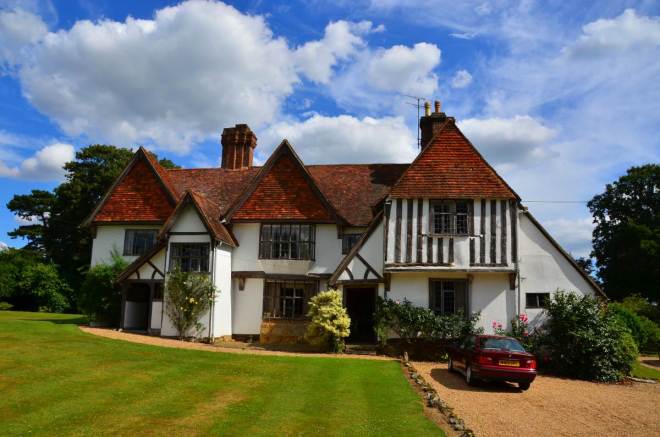
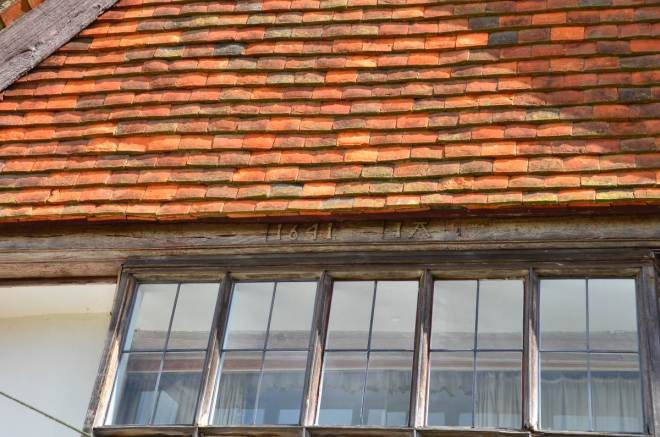
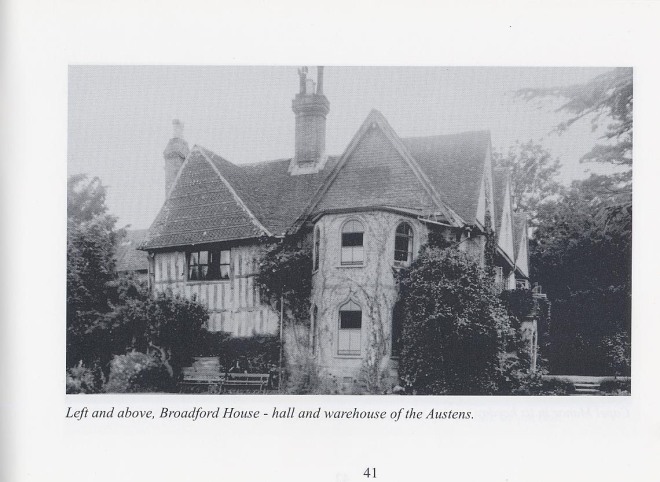
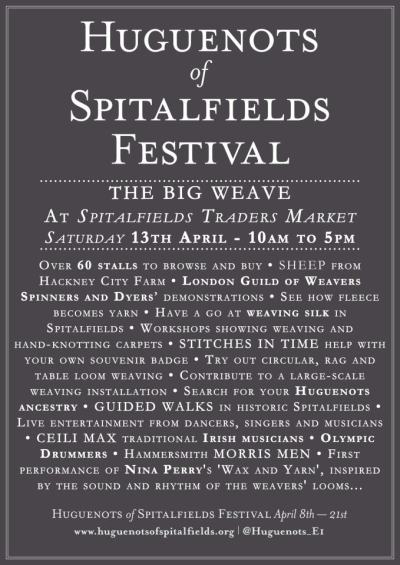
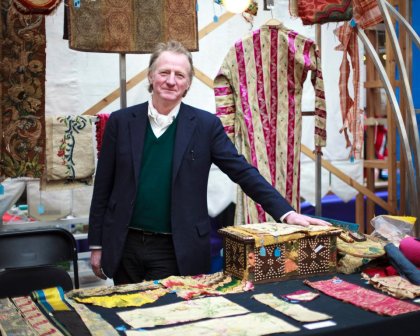
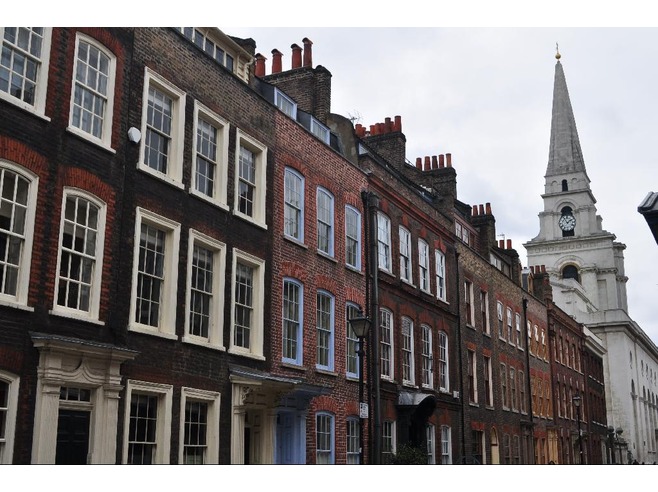
I love all the Austen connections to Hueguenots, Ron.
I too have wandered around Spitalfields on occasion. It is a very interesting area. Christ Church is a wonderful example of a Hawksmoor Church.
,I think Spitalfields Market features in the Jack the Ripper London Walk.
Tony
LikeLike
Tony I highly recommend, as a guide, Paul Baker. He does a number of Jack the Ripper tours (and several, in French, on Jacques l’Eventreur!) each year:
http://www.barnetwalks.talktalk.net/
You’re right, Spitalfields features on them.
There’s a collection of streets at the lower end of Brick Lane whose names come from a family associated with the Austens (more specifically, the Finch-Hatton branch of Edward’s family): Osborn Street, Chicksands Street, Finch Street, Heneage Street, and Old Montague Street. Perhaps worth another article!
Ron
LikeLike
Thank you for the very interesting article. I’m just surprised that Jane Austen herself did not write of her Huguenot connections, especially with her interest in history.
LikeLike
Hi June. Jane may have known that she had Huguenots connections but she may not have met any of them, Tom Lefroy, excepted.
Jane wrote about the people and the world she experienced intimately. Her writing is her ,”shout,” at the world she knew oh so well and the people that inhabited it. If she had no contact or very little contact with the Huguenots then she would not have written about them..
LikeLike
On the other hand if she did come into contact with people of Huguenot decent they probably had assimilated into English life, manners and habits so well that they were indistinguishable. from ,”the real thing.”
I wonder if anybody could do analysis of Janes novels to ascertain any Huguenot traits.that might have infiltrated English society, the English society that Jane writes about? Influences work two ways. I think it is called, “the melting pot!!!”
LikeLike
What do you think she believed about Catholics and also the “new” Protestant churches? It seems all her characters were good old-fashioned Church of England, but as a minister’s daughter, she probably had some opinions about those topics.
LikeLike
Tony, it seems to me that there is little difference between the Huguenots, and Jane’s Austen ancestors, from the independent, business-minded, protestant folk of the Sussex and Kent Weald.
LikeLike
Ron,
What about the Huguenot Rice family of Kent?
As I discussed in the following blog post, Jane Austen felt sympathy for Henry Rice, whose domineering mother did not treat him well:
http://sharpelvessociety.blogspot.com/2011/07/letter-33-where-have-you-gone-jane.html
Here’s what Jane wrote about Henry Rice & his mother in Letter 33 just before the Austens left Steventon for Bath:
“I would not give much for Mr. Rice’s chance of living at Deane; he builds his hope, I find, not upon anything that his mother has written, but upon the effect of what he has written himself. He must write a great deal better than those eyes indicate if he can persuade a perverse and narrow-minded woman to oblige those whom she does not love.”
Cheers, ARNIE
LikeLike
Hello Arnie
I’ve spent a few hours on this, and haven’t yet found evidence that the Rices themselves were of Huguenot extraction. And so far the only information that I can find tracing the Rice lineage beyond Edward Royd’s father Henry, is in Alexander Waugh’s genealogical database. (In case that name catches your eye, yes, he is the son of Auberon and grandson of Evelyn.) His wife, Elizabeth Chancellor, is a 4th-great-granddaughter of Elizabeth Knight and Edward Royd Rice, through the Finch-Hattons. Alexander goes only one generation further still, recording that Henry’s father, and Edward Royd’s grandfather, was Walter Rice of Llwyn-Y-Brain Hall (in Snowdonia). Interestingly, not only did the family of Walter’s wife Bridget Griffiths come from the same area, for at least another four generations in her maternal line, but Bridget’s father was called Rice Griffiths. I’d have thought that it wouldn’t be impossible to learn more about both him, and Walter. That line of inquiry will have to go to the back of a very long queue, I have too many projects that are more pressing!
Ron
LikeLike
Should anyone come across these details, note that there is no significance to the Rice family in the name Rice Griffiths – Rice is merely an alternative spelling to the more familiar Rhys, Reese, or Rees.
Ron
LikeLike
Ron, it wasn’t the Rices who were Huguenots, it was Mrs. Rice, the domineering mother of Henry Rice (whom JA pitied), who was herself born to a Huguenot family.
Now you can get back to your long queue! ;)
ARNIE
LikeLike
Thank you so much for this. I love the Spitalfields area of London and this brings it to life. We were able to go to The Big Weave earlier this year and had a great time.
LikeLike
Fascinating article, Ron, as usual!
About the rise and fall of the Huguenots of Spitalfields, I cannot recommend warmly enough Fiona Rule’s The Worst Street in London:
And I agree on the delightful (and bilingual) Paul Baker.
LikeLike
Hello Catherine! – thanks for responding to Ron and for letting us know about this book – I collect books on London but do not have this one, so shall order – another book for already overstocked bookshelves!
LikeLike
Pingback: Travels with Ron Dunning ~ Jane Austen’s Horsmonden from on High | Jane Austen in Vermont
Wow so much excited trip to Jane Austen’s home town, you are lucky to go with Ron Dunning, I want to go Jane Austen’s home town so badly, I wish I had million dollars, then I can go to visit Jane Austen’s home town.
LikeLike